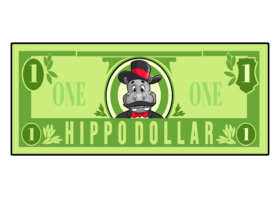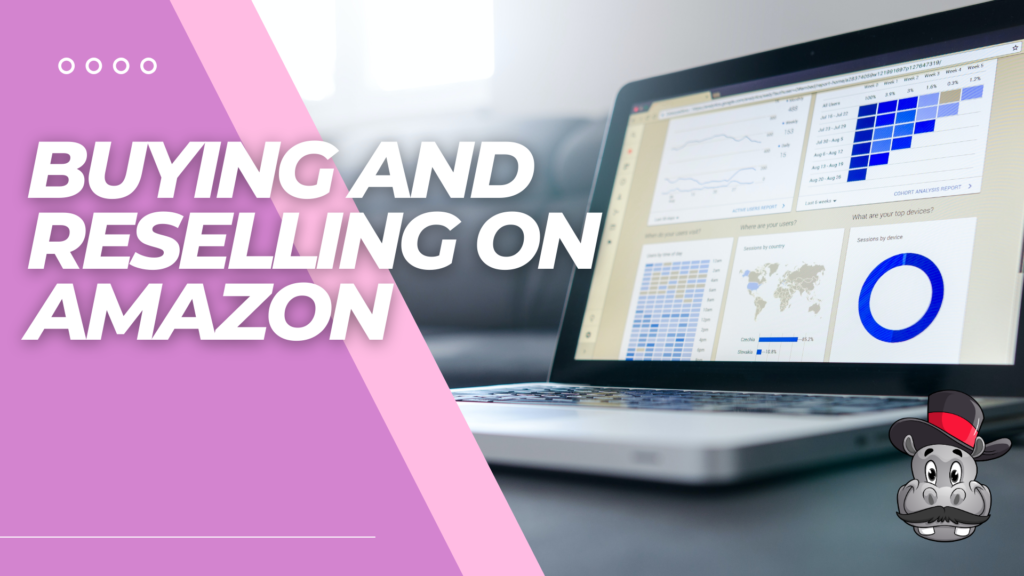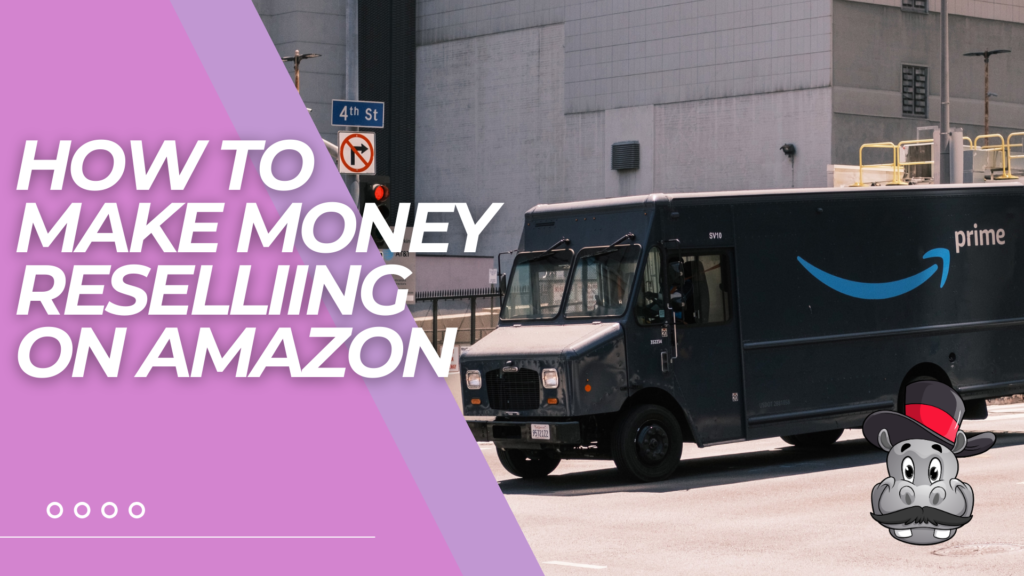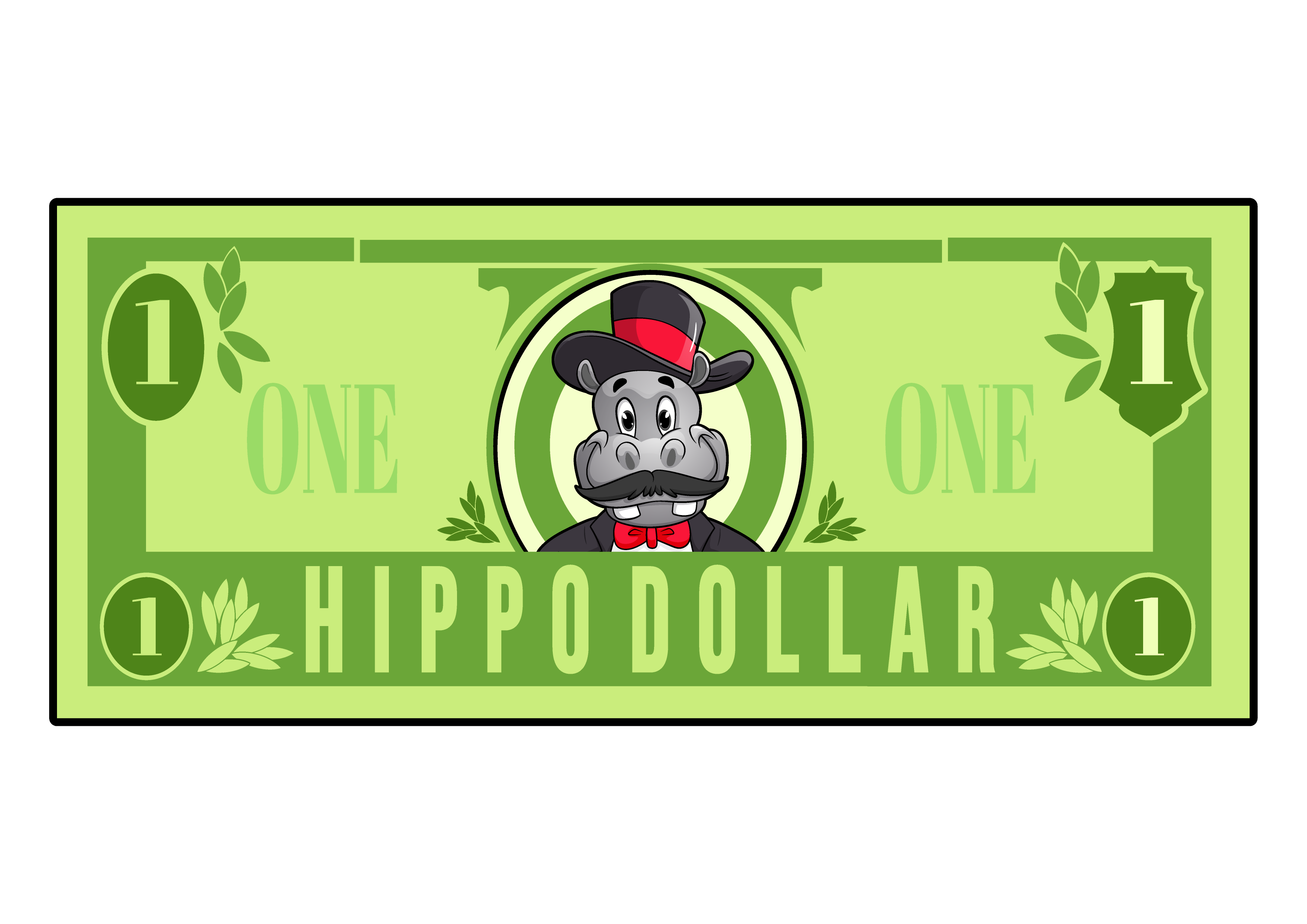This post may contain affiliate links. This means I will make a commission at no extra cost to you should you click through and make a purchase. Read the full disclosure HERE.
INTRODUCTION:
If you’re looking to start your own online business or generate extra income, buying and reselling products on Amazon can be a lucrative venture. With a vast customer base and a well-established platform, Amazon provides a great opportunity for sellers to reach a wide audience. However, navigating the world of Amazon selling requires careful planning and strategizing. Here are the essential steps to successfully buy and resell on Amazon:
1. Research Profitable Products
2. Set Up an Amazon Seller Account
3. Source Products to Sell
4. Calculate Costs and Potential Profit
5. List Your Products on Amazon
6. Optimize Product Listings
7. Price Your Products Competitively
8. Fulfill Orders
9. Provide Excellent Customer Service
10. Monitor Sales and Adjust Strategy
11. Build Your Brand
12. Expand to Multiple Sales Channels
13. Keep Up with Amazon Policies and Updates
14. Selling on Amazon offers numerous benefits
Key takeaways:
- Research profitable products: Before buying and reselling on Amazon, conduct thorough research to identify products with high demand and potential profit margins.
- Calculate costs and potential profit: It’s essential to consider all costs associated with sourcing, shipping, and selling products on Amazon to accurately calculate potential profits and ensure a viable business venture.
- Optimize product listings: Ensure your product listings on Amazon are optimized with relevant keywords, high-quality images, and compelling descriptions to attract more potential buyers and improve your chances of making sales.
1. Research Profitable Products
- Research profitable products by conducting market research.
- Analyze product demand and competition to determine profitability.
- Consider factors like sourcing, shipping costs, and potential profit margins.
- Use tools like Jungle Scout or Helium 10 to gather data and insights.
- Validate your product idea by conducting thorough keyword research and analyzing customer reviews.
A seller researched profitable products using market data and tools, ultimately deciding to sell smartphone accessories. They used keyword research to optimize listings and received positive customer feedback, resulting in consistent sales and substantial profits.
2. Set Up an Amazon Seller Account
- Set Up an Amazon Seller Account
- Click on “Sell on Amazon” on the top right corner of the homepage.
- Choose between individual or professional selling plans.
- Provide required information such as business name, contact information, and bank account details.
- Set up your payment methods and shipping options.
- Complete the tax interview to comply with Amazon’s regulations.
- List your products and optimize product listings for visibility.
- Monitor and manage your seller account regularly.
3. Source Products to Sell
When it comes to sourcing products to sell on Amazon, there are several options to consider:
- Connect with manufacturers or distributors to purchase products in bulk at discounted prices.
- Visit local stores or online platforms to find discounted products that you can resell at a higher price on Amazon.
- Look for products on websites like Alibaba or AliExpress that offer a wide range of products from different suppliers.
- Create your own brand and work with manufacturers to produce custom products that you can sell exclusively on Amazon.
4. Calculate Costs and Potential Profit
| Calculate Costs | Potential Profit |
| Product Cost | Selling Price minus Product Cost |
| Shipping Fees | Selling Price minus Product Cost minus Shipping Fees |
| Amazon Fees | Selling Price minus Product Cost minus Shipping Fees minus Amazon Fees |
| Storage Fees | Selling Price minus Product Cost minus Shipping Fees minus Amazon Fees minus Storage Fees |
In 2019, John started selling on Amazon. He carefully calculated costs and potential profit, ensuring a positive return. By 2022, his business had grown significantly, allowing him to quit his day job and focus on reselling full-time. John’s success story is a testament to the importance of accurately calculating costs and potential profit in the Amazon marketplace.
5. List Your Products on Amazon
- Create an Amazon seller account.
- Gather product information such as description, images, and pricing.
- Choose a product category and fill in required details.
- Optimize your product listing with relevant keywords and high-quality images.
- Set up shipping options and inventory management.
- Publish your product listing on Amazon’s marketplace.
Consider utilizing Amazon advertising and regularly monitoring your listings for optimization. List Your Products on Amazon to reach a wider customer base and boost sales.
6. Optimize Product Listings
To optimize your product listings on Amazon, it is crucial to incorporate relevant keywords and include essential product information in the title. Providing detailed and accurate descriptions in the product description is also important, highlighting key features and benefits. Additionally, using high-quality images that showcase the product from different angles can help improve visibility. Using concise and compelling bullet points to convey important details is another strategy to optimize your listings. Lastly, conducting research and incorporating relevant keywords in your listing will greatly improve search visibility.
7. Your Products Competitively
When selling products on Amazon, it’s crucial to price your products competitively to attract customers and maximize profits. Here are some steps to help you price your products effectively:
- Research: Analyze the market and identify the prices of similar products.
- Calculate Costs: Determine the expenses involved in producing and shipping your products.
- Consider Profit Margin: Decide on a suitable profit margin to ensure profitability.
- Competitor Comparison: Compare your prices with other sellers to stay competitive.
- Offer Discounts: Consider offering discounts or promotions to attract customers.
8. Fulfill Orders
- Fulfill orders by receiving order notifications
- Gather ordered items from inventory to fulfill orders
- Pack items securely to fulfill orders
- Print shipping labels for fulfilling orders
- Arrange shipment pickup to fulfill orders
- Provide tracking information to customers for orders fulfillment
- Monitor delivery status of orders
- Resolve any issues or delays related to fulfilling orders
- Confirm successful delivery of fulfilled orders
9. Provide Excellent Customer Service
To ensure the provision of excellent customer service when buying and reselling on Amazon, it is crucial to follow these essential steps:
- Respond promptly to customer inquiries and address any concerns they may have.
- Offer clear and accurate product descriptions and images to guarantee customer satisfaction.
- Ship orders quickly and securely, using reliable packaging to protect products.
- Provide hassle-free returns and refunds, thereby ensuring a positive experience for customers.
- Ask for and respond to customer feedback to continually improve your service.
10. Monitor Sales and Adjust Strategy
- Monitor sales performance regularly by analyzing key metrics like revenue, profit, and inventory turnover.
- Monitor customer feedback and reviews to identify areas for improvement.
- Stay updated on market trends and competitor pricing to adjust your pricing strategy accordingly.
- Continuously evaluate the effectiveness of your marketing campaigns and make necessary adjustments.
- Analyze customer demographics and buying patterns to tailor your product offerings.
11. Build Your Brand
Building your brand on Amazon is essential for establishing credibility and attracting customers. In order to achieve this, you should follow these key steps:
- Create a unique brand name that accurately represents your business.
- Design a captivating logo that visually portrays your brand.
- Optimize your product listings by incorporating high-quality images and persuasive product descriptions.
- Ensure consistent branding across all touchpoints, including packaging and marketing materials.
- Proactively request product reviews and promptly respond to customer feedback to cultivate trust and loyalty.
12. Expand to Multiple Sales Channels
- Expand to multiple sales channels by evaluating potential options such as eBay, Walmart Marketplace, or Shopify.
- Research the requirements and fees associated with selling on each platform to ensure a smooth expansion.
- Create accounts on the selected sales channels and set up your seller profile to broaden your reach.
- List your products on each platform, ensuring accurate descriptions and high-quality imagery to attract more customers.
- Implement inventory management systems to effectively track stock across multiple sales channels.
- Optimize each listing for search visibility on the respective sales channels, increasing the chances of reaching a wider audience.
- Monitor and respond to customer inquiries and reviews on all platforms to maintain a positive reputation.
- Analyze sales performance on each channel and make adjustments accordingly to maximize profitability across multiple sales channels.
13. Keep Up with Amazon Policies and Updates
Regularly staying informed about Amazon’s policies and updates is crucial to keep up with Amazon Policies and Updates for successful buying and reselling on the platform. It helps ensure compliance with rules and maximizes profitability. Amazon frequently releases policy changes, fee updates, and algorithm adjustments. Keeping up-to-date on these developments will help you adapt your strategies and stay ahead of the competition. Fact: Did you know that Amazon has over 2 million third-party sellers worldwide?
14. What Are the Benefits of Selling on Amazon?
- Wide customer reach: Selling on Amazon offers the benefit of reaching a wide customer base, opening up your products to millions of potential buyers.
- Global marketplace: By selling on Amazon, you gain access to customers all around the world, which allows you to expand your business internationally.
- Fulfillment by Amazon (FBA): Amazon’s FBA service takes care of shipping, customer service, and returns, providing sellers with an easier way to manage their inventory and concentrate on growing their business.
- Trust and credibility: With Amazon being a trusted online marketplace, selling on their platform can help establish credibility for your brand and products.
- Market insights: Amazon offers valuable insights into customer behavior and preferences, enabling you to optimize your selling strategies for maximum effectiveness.
For sellers looking to maximize their success on Amazon, it’s important to optimize product listings, actively manage inventory, and provide excellent customer service.
How Does Fulfillment by Amazon Work?
How Does Fulfillment by Amazon (FBA) Work? FBA simplifies the selling process by handling storage, packaging, and shipping for sellers. Here’s how FBA works:
- Prepare products for shipment and label them accordingly.
- Send products to Amazon’s fulfillment centers.
- Amazon stores and tracks the inventory.
- When an order is placed, Amazon picks, packs, and ships the product to the customer.
- Amazon handles customer service and returns on behalf of the seller.
Pro-tip: Optimize your product listings and use FBA to boost your sales and provide a hassle-free experience for your customers.
What Are the Fees for Selling on Amazon?
- What Are the Fees for Selling on Amazon?
- For individuals, Amazon charges a referral fee of 15% on each item sold.
- There is also a variable closing fee, depending on the item category.
- Professional sellers pay a monthly subscription fee of $39.99, but no referral fees are charged.
- Additional fees may apply for optional services like fulfillment by Amazon (FBA) and advertising.
- It is important to factor in these fees when calculating the potential profit of your products.
| A true historical example of the fees on Amazon is that in 2016, Amazon announced a change in their fee structure for sellers, resulting in increased fees for some categories. This led to backlash from sellers and prompted discussions around the costs of selling on the platform. |
How to Avoid Common Pitfalls When Selling on Amazon?
- How to Understand Amazon’s rules and policies to avoid violations and potential account suspension?
- How to Research and validate product demand and competition to avoid investing in low-demand items?
- How to Monitor and manage inventory levels to prevent stockouts and customer dissatisfaction?
- How to Optimize product listings with high-quality images, accurate descriptions, and relevant keywords?
- How to Provide excellent customer service by responding promptly to inquiries and resolving any issues?
- How to Manage pricing strategies to remain competitive while ensuring profitability?
- How to Stay updated on Amazon’s policies and updates to avoid any unforeseen changes that may impact your business?
- How to Continuously monitor and analyze sales data to identify trends and make necessary adjustments to your strategy?
Are There any Restrictions or Prohibited Items on Amazon?
Yes, there are restrictions and prohibited items on Amazon to ensure the safety of customers and comply with legal regulations.
Are There any Restrictions or Prohibited Items on Amazon? Restricted items include firearms, illegal drugs, counterfeit goods, hazardous materials, and certain medical devices.
Are There any Restrictions or Prohibited Items on Amazon? Prohibited items include stolen goods, offensive and obscene materials, and items that infringe on intellectual property rights.
Are There any Restrictions or Prohibited Items on Amazon? Each product category has its own guidelines and requirements, so sellers must carefully review Amazon’s policies.
Are There any Restrictions or Prohibited Items on Amazon? Failing to adhere to these restrictions can result in account suspension or closure.
What Are the Alternatives to Selling on Amazon?
What Are the Alternatives to Selling on Amazon?
- eBay: A popular online marketplace with a wide range of product categories.
- Shopify: Allows you to create your own e-commerce store.
- Etsy: Ideal for selling handmade or vintage products.
- Facebook Marketplace: A social media platform for local buying and selling.
- Walmart Marketplace: Offers a large customer base and brand recognition.
Some Facts About How To Buy And Resell On Amazon:
- ✅ Reselling on Amazon is a popular way to make money and start a new business. (Source: Jungle Scout)
- ✅ It is legal to resell products on Amazon as long as they are sold in an unchanged condition. (Source: Jungle Scout)
- ✅ Some brands require approval from Amazon before they can be sold by new sellers. (Source: Jungle Scout)
- ✅ Reselling on Amazon involves purchasing products at a low price and then selling them for a higher price. (Source: Jungle Scout)
- ✅ It is important to calculate all fees and expenses before purchasing products to ensure a profit. (Source: Jungle Scout)
Frequently Asked Questions
1. How do I get started with retail arbitrage on Amazon?
To get started with retail arbitrage on Amazon, you can follow these steps:
- Research and identify profitable product ideas using Amazon apps and extensions.
- Determine the potential earnings by checking historical data and considering all fees and expenses.
- Purchase the products at a low price from retail stores or online platforms.
- List the items on Amazon in their unchanged condition, adhering to Amazon’s guidelines.
- Set competitive sale prices and consider all associated fees (e.g., fulfillment, advertising costs).
- Fulfill orders either through Fulfillment by Amazon (FBA) or Fulfillment by Merchant (FBM) options.
2. How can I find profitable product ideas for reselling on Amazon?
You can find profitable product ideas for reselling on Amazon by:
- Using Amazon apps and extensions, like AMZScout’s Dropshipping & Arbitrage, to gather data on profit margins and seller types.
- Browsing Amazon for product ideas and prioritizing based on profit margins and other criteria offered by these tools.
- Checking historical data and potential profits of shortlisted products.
- Considering product costs, shipping expenses, and advertising costs to calculate sales margins accurately.
3. Can I resell products from well-known brands on Amazon?
Reselling products from well-known brands on Amazon may require approval, especially for new sellers. Some big brands enforce restrictions and may ask for invoices or brand authorization before allowing third-party resellers. It’s important to comply with Amazon’s policies and seek necessary approvals when dealing with branded products.
4. How can I transition from part-time to full-time as a seller on Amazon?
To transition from part-time to full-time as a seller on Amazon:
- Start by dedicating specific hours to your Amazon reselling business.
- Gradually increase your product inventory and sales.
- Invest time in learning and implementing effective marketing strategies to compete with other sellers.
- Monitor your business growth and assess when the consistent income allows you to transition to full-time.
- Ensure you have a sufficient budget and stable income stream before making the switch.
5. How can I make money reselling items on Amazon with a limited budget?
Even with a limited budget, you can make money reselling items on Amazon by:
- Focusing on cheaper or discounted products in the retail arbitrage or online arbitrage models.
- Selecting products with a significant price difference between purchase and potential sale price.
- Emailing suppliers or wholesalers to negotiate better prices.
- Optimizing costs by utilizing your own resources, such as working from home and minimizing advertising expenses.
- Gradually reinvesting profits to increase your product inventory and expand your business.
6. What are the benefits of using Amazon apps and extensions to resell on Amazon?
Using Amazon apps and extensions offer several benefits for reselling on Amazon:
- They provide tools like revenue calculators, historical data, and profit margin estimators to help sellers make informed decisions.
- They expedite the process of finding profitable product ideas and prioritizing them based on criteria like profit margins.
- They streamline calculations of fees, costs, and potential earnings, ensuring accurate assessment before purchasing products.
- They offer convenience and make it easier to navigate the world’s biggest online marketplace, saving time and effort.





Pingback: Retail Arbitrage vs. Online Arbitrage - Hippo Dollar
Pingback: How To Make Money On Amazon Without Selling | Hippo Dollar
Pingback: How To Make Money Reselling On Amazon | Hippo Dollar